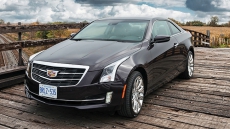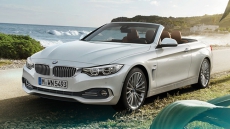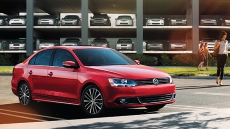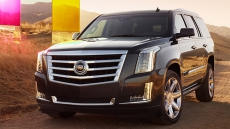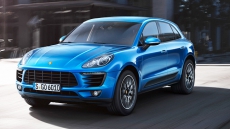There’s some hesitancy from the public regarding the future of self-driving cars; a survey by Autolist says that most shoppers are split about whether having self-driving capability on a vehicle makes it safer. Thankfully, real automated driving vehicles are still years away. But considering that nearly every new car on sale today comes standard or is available with some level of driver-assistance technology, it’s best to stay informed on what these features actually do and whether you would want to pay extra for them.
These driving-assist technology features are often referred to as advanced driver-assist systems, or ADAS. Some ADAS are more advanced than others, and capabilities vary from vehicle to vehicle. Let’s be clear: There are no fully automated or self-driving cars for sale today. For example, General Motors’ Super Cruise system and Ford’s upcoming BlueCruise system allow for limited hands-free driving, but most new vehicles do not. All ADAS today — even hands-free ones — require the driver to pay attention to the road and be ready to take over at any time.
The actual function of ADAS is similar among automakers, but mixed messaging and confusing names don’t make it very clear how vehicles compare. Edmunds is here to help break down what these terms actually mean and what some of these systems can do.
ADAPTIVE CRUISE CONTROL
Adaptive cruise control can adjust your speed to maintain a constant distance between your vehicle and the car in front. Some systems can bring a vehicle to a complete stop and then speed up again when traffic starts to move. Others can also react to traffic signs and set speed accordingly. Some manufacturer names you might come across include Dynamic Radar Cruise Control (Toyota), Smart Cruise Control (Hyundai) and Intelligent Cruise Control (Nissan).
AUTOMATIC EMERGENCY BRAKING
Automatic emergency braking paired with forward collision warning can alert you if a front impact is imminent and can apply your vehicle’s brakes if you don’t respond in time. As with adaptive cruise control, there are a variety of names that automakers use to refer to automatic emergency braking. They include Collision Mitigation Braking System (Honda), Forward Collision Mitigation (Mitsubishi) and Collision Prevention Assist Plus (Mercedes-Benz).
Some more advanced systems include features such as evasive steering assist, which enhances the forward collision mitigation system and can help steer a vehicle to possibly avoid a collision.
LANE-KEEPING ASSIST
Lane-keeping assist can help steer your vehicle back into its lane if it begins to drift over the lane marker. Drivers might feel a small tug on the wheel as well as see a warning that the vehicle isn’t staying in its lane. Various names include Active Steering Assist (Mercedes-Benz) and Intelligent Lane Intervention (Nissan). A lane-departure warning system only alerts you about drifting out of your lane and cannot make any corrective action.
SUPER CRUISE AND AUTOPILOT
General Motors’ Super Cruise and Tesla’s Autopilot are some of the most advanced driver-assist systems available. Super Cruise was the first hands-free system to hit the market, though it currently only works on highways. Besides adjusting speeds with adaptive cruise control, Super Cruise can change lanes for you. You still have to be ready to take over at any time, and the car monitors the driver to make sure he or she is paying attention to the road.
Autopilot works fairly similarly, though at the moment it doesn’t allow for hands-free driving even with the so-called Full Self-Driving Capability. When using the Navigate on Autopilot feature, the Tesla will suggest lane changes and can automatically steer your vehicle toward the proper highway exit. Tesla is also phasing in a camera-based driver monitor since its current monitoring system can be easily bypassed.
OTHER DRIVER-ASSIST SYSTEMS
Automated parking systems steer into a parking spot with little or no driver intervention. These systems work with parallel parking too. Many cars today have automatic high beams that use sensors to automatically turn the high beams on and off. Surround-view or 360-degree cameras can show a top-down view of a vehicle, which can be helpful when parking. Some new trucks have trailer assist systems that can help when hooking up a trailer or help reduce sway when towing.
WHAT ELSE SHOULD I KNOW?
Many automakers bundle these systems into suites or packages under a single moniker. Names include Nissan ProPilot Assist, Toyota Safety Sense, Honda Sensing and Mazda i-Activsense.
EDMUNDS SAYS: Advanced driver-assist systems are making their way into more and more new cars, though no car today is truly self-driving. Knowing how they work and the general terminology is important for any car shopper today.
_____


